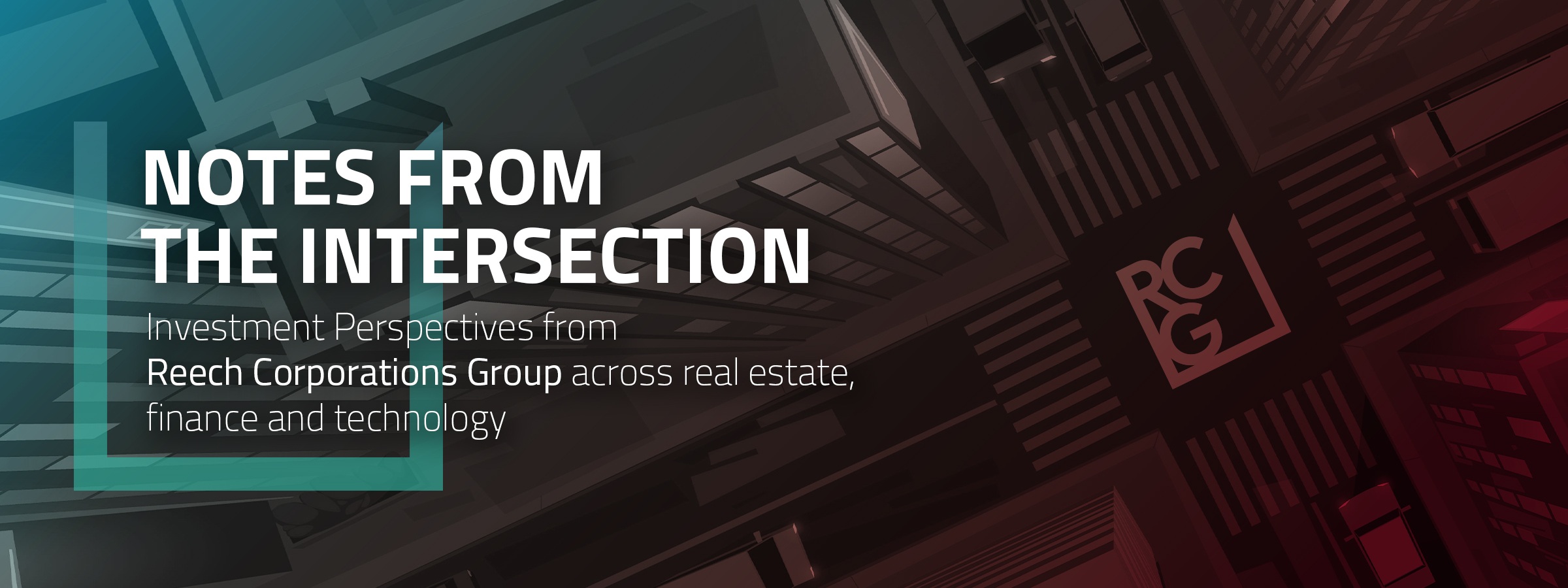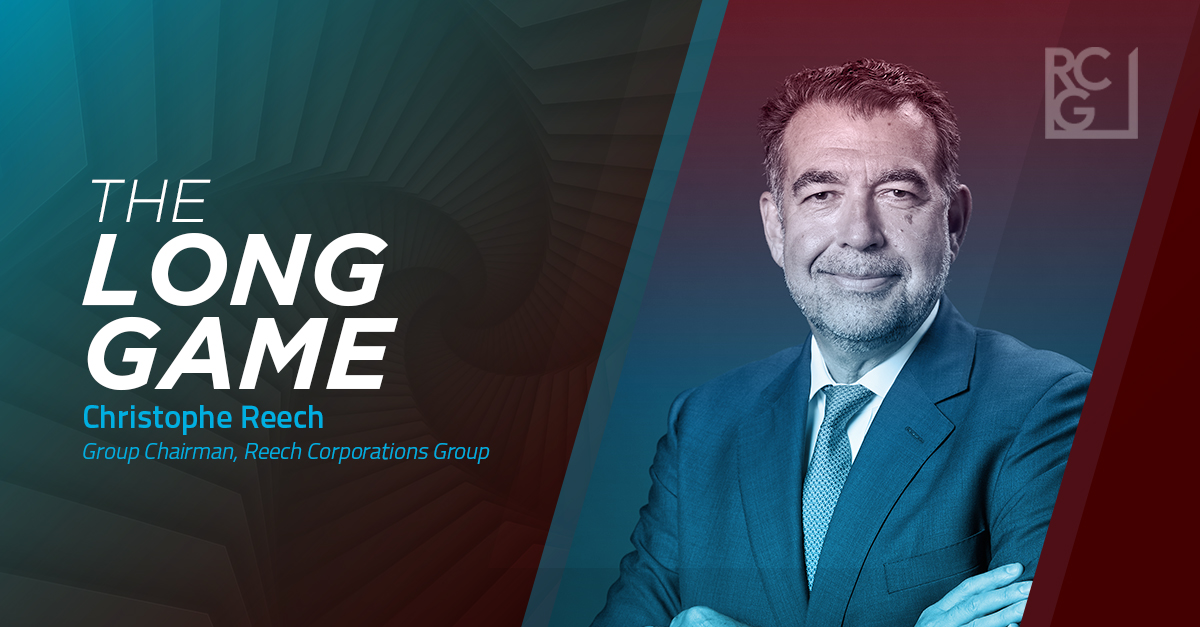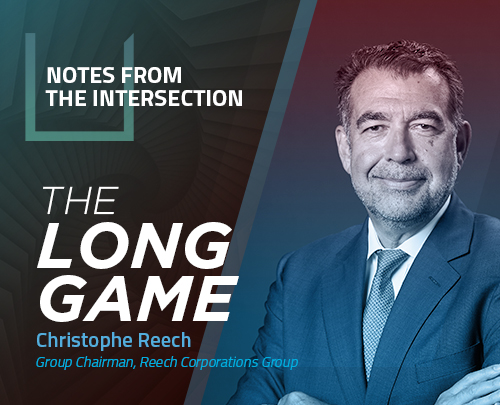Notes from the Intersection – The Long Game


We live in inconceivable times.
Enabled by converging advances in areas such as artificial intelligence, quantum computing and the internet of things, the opportunity and the need to do things differently, to engineer the previously inconceivable and do things better, is all around us and accelerating. Compute, network hardware, SSD and internet transit costs continue to plummet, broadly in line with Moore’s Law. Hard disk storage costs are similarly decreasing in line with Wright’s law and we are improving the accuracy and speed of AI algorithms in practically every field from language to image processing.
At the same time, we are truly in the foothills of unlocking the full suite of opportunities here. Looking at one broad indicator, despite COVID accelerating gains in 2020, global e-commerce still only represented around 18% in aggregate of total global retail sales last year, with that share forecast to grow to around 22% by 2024. Going even more macro, most estimates suggest 80-90% of the world’s data (the vast majority generated in the last few years) remains unstructured and therefore a greenfield site for potential actionable insight.
The intersection between real estate, finance and technology
Reech Corporations Group (Reech Corp) is an active holding company (AHC), building businesses at the intersection between real estate, finance and technology. It’s what we know and where we deployed over USD 1billion last year. It’s where we’ve found and hired some of the brightest minds in their industries with decades of experience, including senior leaders from Google, Facebook, CBRE and Morgan Stanley and partnered with world-class academic institutions such as Oxford and Cambridge to power the Reech Corp “engine room”.
The real estate, finance and technology intersection is a multi-trillion dollar space – incredibly deep, but slow to digitise. Take one side of that intersection – the real estate industry. It remains largely characterised by manual processes and legacy tech infrastructures. It has vast stores of data which are unstructured, unmined and non-real time. The global property “estate” is almost exclusively made up of “dumb”, sensor-less buildings, cumulatively accounting for an estimated 40% of global energy consumption and 36% of global CO2 emissions. The industry’s approach is frequently siloed, protectionist and hyper-localised. It has failed to harness the literally petabytes of publicly available data on the built environment being released by national state authorities across the world every day. To scale that for you, one petabyte of average MP3-encoded songs would take 2000 years to play.
And that’s a narrow definition of real estate. All industries and governments need to understand, often at speed, not just the valuation of their space, but its utility. As in so many areas, COVID brought this into sharp focus and Reech Corp’s portfolio companies have used their tech muscle, domain expertise and actionable geospatial insights to help both business and state actors respond to the pandemic, alongside work on an expanding set of use cases, including property market intelligence, realising business rate efficiencies, ESG and other property analytics, and real-time property indices, to name a few.
In practice, all actors are currently operating on a fraction of the available data they need to make optimal decisions on land use. We estimate that a typical commercial application in the real estate space might hold tens or perhaps low three figure terabytes of data. RE5Q, one of our portfolio companies, tends to store and mine substantially more than this – typically around 700 terabytes per application.
This sub-optimisation is changing and will change even more profoundly in the years to come. Based solely on the potential of the latest technology available now, but yet to meaningfully deploy, there are already many years of structural change still to sweep through and transform how we understand and interact with the surface of our planet, every second of every day.
Investing for the long term to harness the power of transformational change
For substantial, active long term investors, this raises the question of how best to go about harnessing the power of transformational change given that kind of wide and long runway?
At Reech Corp, we’ve taken a fresh look at the AHC structure, the operating model adopted by, yes, Berkshire Hathaway, but equally Canada’s Power Corporation, France’s Arnaud group and a host of others including many family offices founded on entrepreneurial wealth. Our starting point has been to think about the kind of investor we are, the kind of investments we make and who we like to work with to capitalise on the abundant potential we see.
By its nature, Reech Corp is a business builder either from the ground up or taking control or significant influence positions to accelerate growth. We share this DNA, this history of building businesses over time, with many global family office founders and leaders, with whom we have an extensive and current history of collaboration and co-investment. We align with them around a perspective and approach which is multi-investment round and multi-generational. We both look to leverage global in-house technical expertise, experience and relationships in sectors we know and have worked in for decades. Perhaps most fundamentally, we are both geared towards long term operating success, not short term realisation.
Timing here is important. Fully realising the potential of the structural shifts or differentiated approaches in which we are investing means doing things when the time is right and avoiding the bear traps of forced selling or forced buying. In this way, we are also deeply aligned with the sovereign wealth and endowment communities which are more focussed on building a flourishing and sustainable future for their citizens and beneficiaries for decades to come than the short term gyrations of the market or fluctuations in the 10 year T-Bill.
Let’s also deal with some potential misconceptions. As long term investors, this does not mean we only think “buy and hold” or are slow in acting either to trim elements that become non-core or bring in accretive assets. Nor is a long term approach exclusively focussed in areas where transformation is front and centre, although this is our prime focus and all our investments fall within that real estate, finance and technology intersection. We also actively invest in strong businesses in established markets where there is long term potential for a differentiated, value-add approach. Nor are we put off by complex situations or need years and years to generate significant value. The opposite is true. An AHC structure allows us to play the long game, but be agile, decisive and responsive to opportunities and challenges as they arise.
Compare and contrast with Private Equity
Let’s compare and contrast this approach for a moment with the conventional private equity (PE) model, currently undergoing massive multi-year industrialisation, off the back of a wall of capital which kept building even through 2020, it’s third highest fundraising year on record, second if you add the SPACs.
Positioned as a crucible for building businesses, there is something about the PE construct which, nonetheless, jars with the long term investor perspective.
There are many smart, well-connected PE managers playing in the disruptive growth space (and we work with and sometimes on the opposite side of the table to some of the best), but here’s my bullet-point take on a half dozen key conventional PE limitations contrasted with an AHC approach.
- Transactional vs Operational: PE is managed with a fundamentally “transactional” mindset rather than the “long term operational” perspective of AHCs. PE typically has limited “skin in the game” compared to AHCs (either alone or with co-investors) and bakes in incentivisation structures, based on deal by deal or fund as a whole models, where there tends to be an asymmetric payout profile to the manager based on lone “home runs”. AHC incentivisation tends to track operational results more closely. Further, the transactional mindset, while it can clearly energise some investee company leadership teams towards an IPO or other exit, may, in practice, shrink the investable pool of potential portfolio companies. As an AHC with a patient capital, operational approach, we regularly engage with founder-led and family-owned businesses, some of whom see the PE model as at odds with their culture, values and time horizons.
- Clock ticking vs Right time: The conventional PE “out in 4, back in 4, 2 to tidy up” set-up can erode optionality and potentially, in extremis, foster forced selling and buying. Add in around USD 2 trillion of current PE industry dry powder and it is no surprise that deal multiples (for the last few years, the key contributor to value creation) are at, or close to, all-time highs as PE players chase a limited set of deals, with the clock ticking. The AHC is not time bound or “cornered” in the same way.
- IRR-centric vs Tailored Liquidity: IRR can incentivise the acceleration of cash back to limited partners. There is a significant swathe of investors that want their capital deployed on a long term basis, do not want to have it recycled back to them to support an IRR track record which could be seen as primarily benefiting the manager rather than the investor and do not want the headache and the cost of receipt and redeployment, including potentially the crystallisation of capital gains and other taxes. In their 2018 paper “Spotlight on Long-Hold Funds”, Bain modelled costs and returns for a theoretical long-hold fund selling an investment after 24 years, vs. a typical buyout fund selling four successive companies over that period. Assuming equivalent business performance, the modelled long hold fund outperformed the conventional duration fund 2.5 times solely by eliminating transaction fees, deferring capital gains taxation and keeping capital fully invested. AHCs can accommodate liquidity options and other capital distributions in a manner which can be more tailored to the needs and preferences of individual investors and in a way which mitigates this cost drag.
- Leaving Value on the Table vs Realising Full Potential: If you have created competitive edge, why stop at IPO or “pass the parcel” when the realisation timeframes kick in (or sometimes earlier to juice IRRs ahead of fundraising)? The nature of transformative innovation is that, handled correctly, it gives on giving. Why check that investment potential in at the door? AHCs have the time and space to make the right investments at the right time and see them through to the fullest extent of their potential and with the optionality to be on that journey across both private and public markets.
- Leaks “Operational Alpha” vs accumulates “Operational Alpha”: In an AHC structure, “operational alpha” in its focus areas is preserved and builds up over time and can be made available to strengthen the group as whole. In PE there is a higher risk of dissipation and a lack of that cumulative effect.
- Fixed Term vs Evergreen PE funds are fixed term. Some evergreen structures exist, but the central vehicles used by the managers have expiry dates. By its nature, an AHC is an evergreen structure, focussed on long term investing in a way which, as noted earlier, closely aligns with objectives and outlook of many leading family offices, sovereign wealth funds, endowments and other long term investors. It is therefore better suited to creating permanent capital vehicles or similar participation structures for like-minded long term investors, alongside or at various levels within the group structure. It does this in a way which enables co-investors to participate on an ongoing basis in the full innovation “platform” built out over time by the AHC and to keep capital invested for the long term. Very importantly, it is better suited to fostering the kind of close knit ongoing collaboration with co-investors which capitalises on their expertise, relationships and pipelines within an established framework that provides clarity on direction and governance. PE with more diverse investor bases and expiry date fund structures is much less suited for this.
An approach matching the scale of the opportunity
At the end of the day, investment structures will not make a bad deal good or a good deal bad. They may, however, set you up better for success.
I am reminded here of an old Arabic idiom (more time in the Gulf is rubbing off on me(!):
إذا نُصِرَ الرأي بطل الهوى إذا هَبَّتْ رياحك فاغتنمها.
It loosely translates as “If a wind blows, ride it” or less literally – take advantage of chances when they come along.
The winds of structural change blowing through the sectors we focus on are forceful and unrelenting. The chances are generational. They deserve a long term approach and a business builder way of working which matches and capitalises on the scale of the opportunity.
